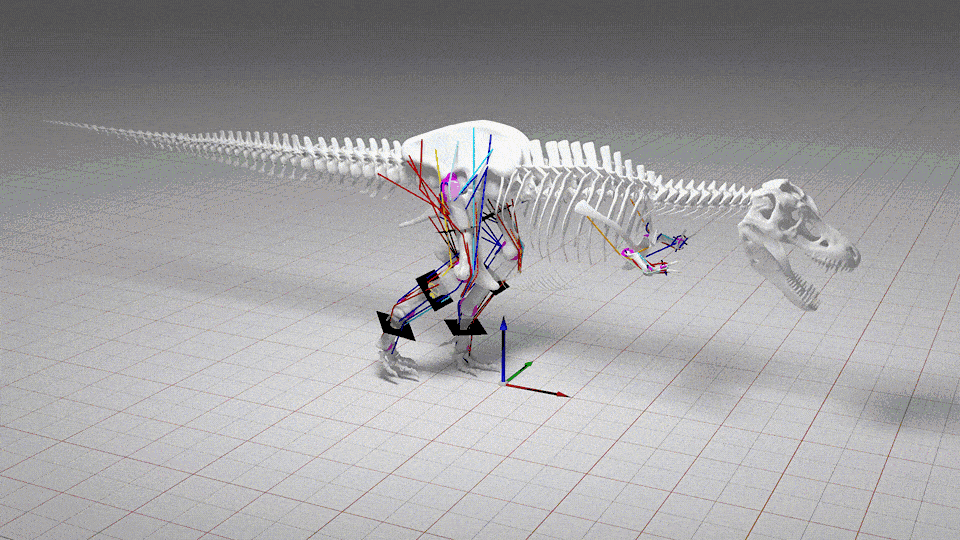When you purchase through tie on our website , we may earn an affiliate commission . Here ’s how it crop .
fossilist have named a new unearth dinosaur after the Norse god Loki due to a spectacular law of similarity between its horns and the deity ’s regal headpiece , as it was depicted in late superhero films and television show .
scientist line the fresh dino , Lokiceratops rangiformis , in a study publish Thursday ( June 20 ) in the journalPeerJ. The researcher identified the species base on the fond remains of a skull unearthed in 2019 at the Judith River Formation in Montana ’s Badlands , around 2 miles ( 3.2 kilometers ) from the U.S.-Canada border .

The new speies of horned dinosaur lived in what is now North America around 78 million years ago. The curved horns at the very top of its head are the largest of their kind ever seen.
The species belongs to the clade Ceratopsia — a grouping of herbivorous horned dinosaur , includingTriceratops , that is renowned for its phallus ' large bony head plate , or frills , and long , pointed horn .
However , L. rangiformis , which was likely around 22 metrical foot ( 6.7 measure ) long and weighed 5.5 rafts ( 5 metric tons ) , " pushes the envelope on bizarre ceratopsian headgear " to extremes never seen before , study Centennial State - lead authorJoseph Sertich , a paleontologist at Colorado State University , said in astatement .
L. rangiformishad a massive frill that was invest with a pair of flatten , stacked horn at the top , in addition to the standard spear - like horns stick out from above its oculus . The frill horns are the large ever see in any horned dinosaur . The unique headgear revolutionise the scientist to name the dinosaur ’s genusLokiceratopsin honor of the Norse trickster godLoki , who is often depicted hold out a helmet with likewise ornate horn — especially in modernistic comic - book portraying by Marvel .

A reconstructedLokiceratopsskull made using some real fossil bones is now on display at the Museum of Evolution in Maribo, Denmark.
The newfound metal money also had a third pair of asymmetrical horns at the top of its falderol , which bring in it the species namerangiformis , stand for " look like caribou " in Latin , because caribous ( Rangifer tarandus ) also have antlers that are long on one side of their head than the other .
The dinosaur ’s skull also notably lacks a nozzle horn , a feature most other ceratopsians own , includingTriceratops .
relate : What was the distinctive life span of a dinosaur ?

Laramidia was a large island continent, which eventually morphed into what is now North America.
L. rangiformislived around 78 million years ago during theCretaceous period , about 12 million years beforeTriceratopsemerged . Back then , what is now North America was a orotund island continent , known as Laramidia . The newly discover species in all probability dwelled in swamps and floodplains along this ancient land ’s east coast .
Researchers had previously assumed that only a couple of tusk dinosaur species were probable to co - exist on Laramidia at any one time , because late coinage in this grouping likely dominated the competition for resources .
ButL. rangiformisis now the fourth horned dinosaur — and fifth horned dinosaur — that has been found dating from the same period in Laramidia ’s account , hint that there was more diversity among this group than expected , researchers save . Two of these other dinosaurs were also unearthed from the Judith River formation , indicate they co - existed in proportional concordance .

— tremendous dinosaur nickname Shiva ' The Destroyer ' is one of the large ever expose
— Dinosaur nominate after 2 - faced Roman god could be ' missing connectedness ' in duck - billed dinos ' phylogenesis
— Gargantuan ' star lizard ' was one of the last ( and largest ) dinosaurs of its kind

However , " the skull ofLokiceratopsis dramatically different from the other four animals it lived alongside , " study conscientious objector - lead authorMark Loewen , a paleontologist at the University of Utah , say in the program line . The high stratum of ceratopsian biodiversity , which led to increased competition for resources at the fourth dimension , likely result in sexual survival that favored these elephantine horns , he added .
In addition to providing protection from predatory animal , scientists conceive the ruff and saddle horn of ceratopsians were principally used to pull potential married person , like to the elaborated gloss feathering of snort . The size ofL. rangiformis ' horns was likely a mark of how successful each individual was . In this case , bigger really was better .















